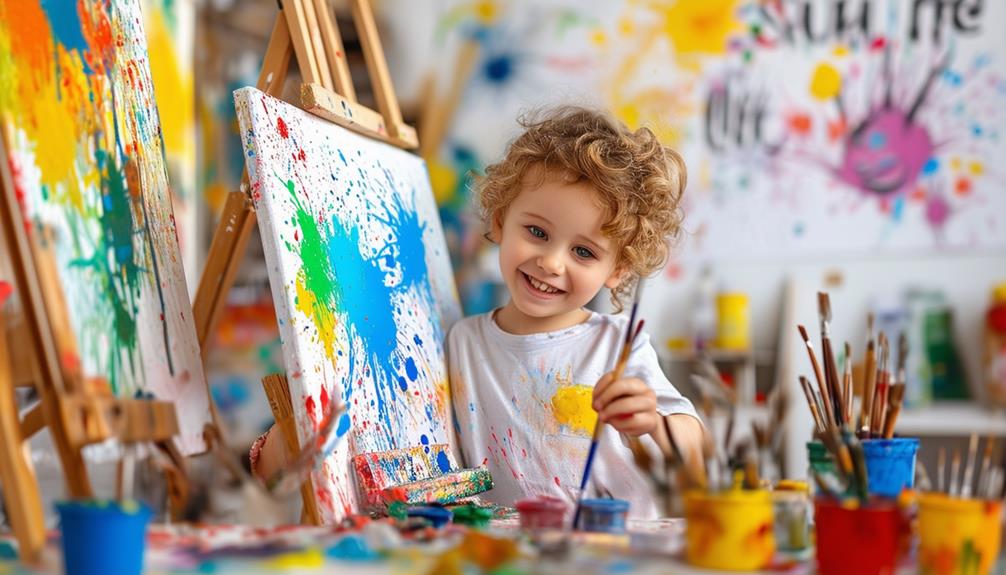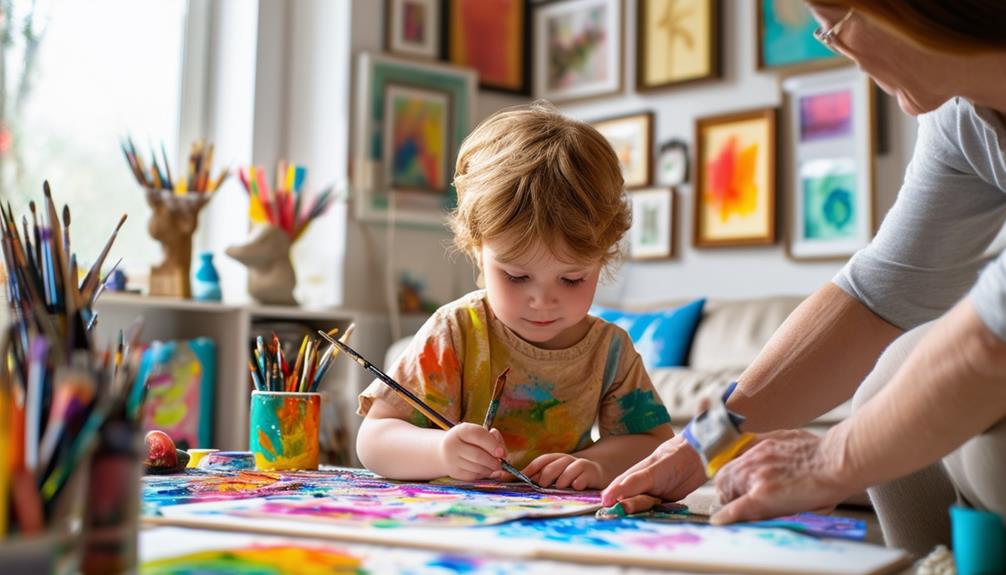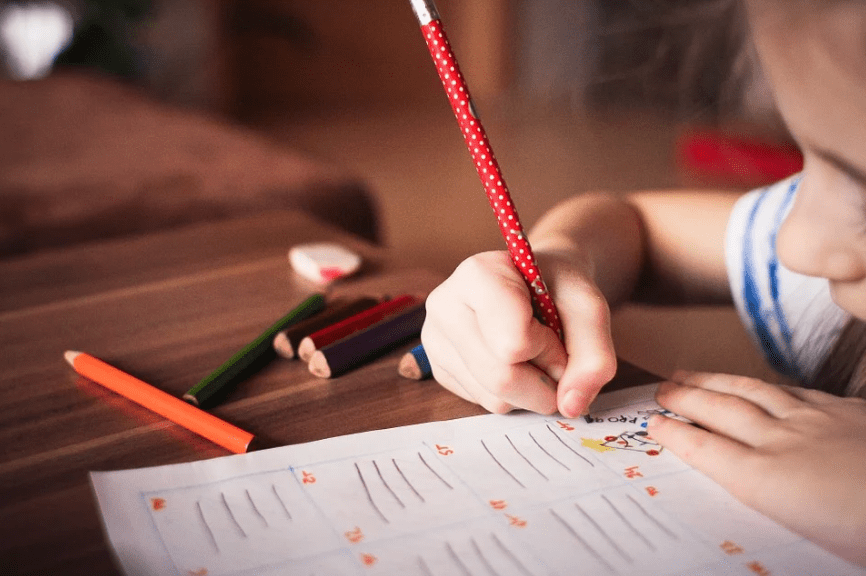How to Foster a Lifelong Love of Art in Your Child

Fostering a lifelong love of art in your child involves more than just providing art supplies; it's about nurturing an environment where creativity can flourish. Start by making art materials readily available and setting up a dedicated space for their projects. Encourage exploration of various mediums and styles, and visit art museums to ignite their imagination. Engage in discussions about different artworks to expand their understanding and appreciation. To maintain their interest as they grow older, continue to support their artistic pursuits and introduce them to new experiences and challenges in the art world.
Benefits of Art Education
Art education offers numerous benefits that nurture a child's creativity, imagination, and problem-solving skills. When children engage in artistic activities, they're not just having fun; they're also developing essential cognitive and emotional abilities. Art education stimulates the brain, improving attention span and enhancing confidence in learning outcomes. It serves as a powerful tool for cognitive development, enriching critical thinking and creative problem-solving skills.
Moreover, art education promotes emotional development by providing a valuable outlet for self-expression. Children learn to process their emotions through creative activities, which can be incredibly therapeutic. Techniques such as art therapy allow children to effectively cope with anxiety, depression, and trauma, thus supporting their overall mental health and well-being.
In addition to cognitive and emotional benefits, art education also hones fine motor skills and hand-eye coordination. Activities like drawing, painting, and sculpting require precise movements, helping children refine these vital skills. As they explore different art forms, they develop better hand-eye coordination, which is essential for everyday tasks. By encouraging art education, you are fostering a well-rounded, emotionally healthy, and creatively inspired child.
Making Art Accessible
Keeping art supplies easily reachable in your home encourages your child to engage in spontaneous creativity and regular artistic inquiry. By designating a specific area for art materials, you make it simple for your child to immerse themselves in creative projects whenever inspiration strikes. A well-stocked supply cupboard filled with various art materials like paints, markers, paper, and clay can open up endless possibilities for artistic expression and experimentation.
When art supplies are within reach, your child is more likely to explore different forms of creative expression independently. This accessibility empowers them to take charge of their own artistic journey, fostering a sense of confidence and originality. Additionally, having a range of materials readily available promotes experimentation, helping your child discover new techniques and styles.
Here are some tips to make art more accessible:
- Create a designated art space: Set up a specific area in your home where art supplies are always available.
- Keep it well-stocked: Regularly replenish art materials to ensure your child never runs out of options.
- Organize for ease: Use containers, shelves, and drawers to keep supplies tidy and easily reachable.
Encouraging Creative Expression

Encouraging your child to freely experiment with their artistic choices helps them develop a deeper connection to their creativity and self-expression. By supporting their exploration of various art forms, you offer opportunities that are both enjoyable and educational. This nurtures their confidence and self-esteem, allowing them to convey emotions, stories, and ideas through diverse creative outlets.
Create an inviting art space equipped with a wide range of materials such as paints, markers, clay, and fabric. This environment encourages your child to experiment with different textures, colors, and shapes, fostering a lifelong love of art.
Here's a quick guide to setting up an art space:
| Materials | Advantages | Ideas for Use |
|---|---|---|
| Paints | Enhances understanding of color theory | Create abstract paintings |
| Clay | Improves tactile skills | Sculpt animals or figures |
| Markers | Develops fine motor skills | Draw comic strips |
Providing a supportive environment for artistic expression not only enriches your child's creativity but also their communication and collaboration skills. Embrace their individuality, and you'll be fostering a lifelong love for creativity.
Exploring Different Mediums
Experimenting with different art materials with your child opens up new pathways for creativity and helps them identify which form of artistic expression they enjoy the most. Encouraging your child to try diverse art forms like sketching, coloring, molding, and montage can greatly expand their creative skills and interests. By offering exposure to different materials, you're enabling them to develop fine motor skills and express their unique ideas more effectively.
This exploration phase is pivotal, as it can lead to a lifelong passion for art. Whether they're shaping clay into imaginative forms or mixing hues on a canvas, each material provides a distinctive way for your child to express themselves.
Here are some materials to experiment with:
- Sketching: Enhances fine motor skills and attention to detail.
- Coloring: Offers opportunities to play with colors and textures.
- Molding: Promotes three-dimensional thinking and spatial awareness.
Giving your child a range of artistic experiences helps them find their preferred material and sustains their creative spark.
Fostering Art Appreciation

Once your child has experimented with different art materials, it's essential to help them appreciate the broader world of art. Start by visiting art museums, galleries, and exhibits. These experiences expose kids to diverse art styles and mediums, broadening their understanding and appreciation. Discuss the emotions and meanings behind a variety of artworks to encourage deeper engagement.
Provide opportunities for your child to explore art from different cultures and historical contexts. This enriches their global awareness and helps them see the value of self-expression in various forms. By appreciating this diversity, they can nurture their skills and become more well-rounded individuals.
Encourage your child to talk about their own art projects and the feelings behind them. This practice helps children to express themselves more openly and understand the significance of creating art. Whether they are in elementary or high school, these discussions can foster a deeper love for art.




